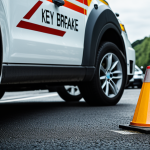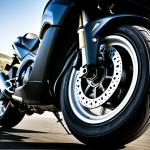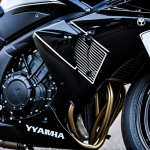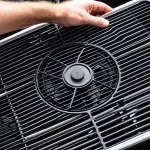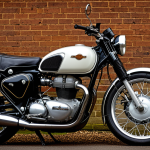Recommended Tire Pressure Specifications for Piaggio MP3 Models
Understanding the Piaggio MP3 tire pressure recommended by the manufacturer is essential for ensuring safety and performance. Piaggio provides optimal psi values for each model, clearly outlined in the tire air pressure chart found in the owner’s manual. These specifications differ between models and are carefully calculated for both front and rear tires.
For example, the front tires on most Piaggio MP3 models require a slightly different pressure than the rear, reflecting their roles in weight distribution and handling dynamics. Variability in load conditions, such as carrying a passenger or cargo, demands adjustments to these standard pressures. Similarly, environmental factors like temperature changes affect tire air pressure; cold weather often causes a drop in psi, necessitating routine checks and possible inflation.
Topic to read : Mastering Quickshifter Installation on Your Yamaha R3: Achieve Lightning-Fast Gear Shifts!
Riders must consult the manufacturer specifications precisely. Over- or underinflation risks compromising stability and safety on the unique three-wheel setup of the Piaggio MP3. Accurate adherence to the Piaggio MP3 tire pressure guidelines ensures optimal grip, longevity, and efficient fuel consumption.
Tire Pressure Adjustment: Step-by-Step Guide
Accurate adjustment of Piaggio MP3 tire pressure begins with gathering essential tools: a reliable pressure gauge, an air compressor or pump, and the tire air pressure chart specific to your model. Knowing how to check tire pressure correctly involves removing the valve cap and pressing the gauge firmly onto the valve stem to get a precise reading.
This might interest you : Transform Your Kawasaki Z900: Key Strategies for Maximizing Suspension Performance on the Track
Interpreting these readings means comparing the number against the optimal psi values listed in the manufacturer specifications. Tire pressure should be measured when the tires are cold, as heat from riding skews the result.
To adjust pressure, first determine if inflation or deflation is necessary. Use a pump or compressor for adding air, and release air gently from the valve stem if reducing pressure. Repeat the measurement to ensure that the pressure matches the recommended psi exactly. It’s crucial to address front and rear tires separately, as their Piaggio MP3 tire pressure requirements differ to balance handling and load characteristics.
Following these exact steps ensures safe and efficient riding. Regular and precise adjustments help maintain the balance between comfort, stability, and tire longevity on your Piaggio MP3.
Recommended Tire Pressure Specifications for Piaggio MP3 Models
Piaggio’s manufacturer specifications for the MP3 tire pressure are tailored to suit each model’s unique design and handling characteristics. These official recommendations are clearly detailed in the tire air pressure chart, which is an essential reference for ensuring the correct optimal psi is maintained. The front tires typically require a different psi value than the rear due to variations in load distribution and steering dynamics.
Several factors influence the exact Piaggio MP3 tire pressure settings. For example, carrying a passenger or additional cargo increases the recommended pressure to maintain stability and safety. Similarly, weather conditions impact tire pressure; colder temperatures cause contraction of air inside tires, requiring pressure adjustments to stay within the optimal range. Riding conditions such as higher speeds or rough surfaces also demand adhering strictly to the manufacturer specifications to prevent performance issues.
Consistently consulting the tire air pressure chart and adapting to these factors ensures the Piaggio MP3’s tires function optimally, enhancing grip, fuel efficiency, and overall ride quality.
Recommended Tire Pressure Specifications for Piaggio MP3 Models
Piaggio defines specific optimal psi values for each MP3 model, clearly indicated in the tire air pressure chart within the owner’s manual. These manufacturer specifications are calibrated to balance handling, safety, and tire longevity. Notably, the Piaggio MP3 tire pressure differs between front and rear tires due to their distinct roles: the front tires manage steering and stability, often requiring slightly lower psi than the rear tires which bear more weight.
Factors influencing the recommended psi include load conditions—carrying a passenger or cargo typically requires an increase in tire pressure to maintain proper contact and control. Weather also plays a significant role; colder temperatures cause air contraction, lowering tire pressure and necessitating adjustments to stay within official manufacturer specifications. Additionally, aggressive riding or rough surfaces may demand vigilance in maintaining proper inflation levels.
Adhering to the tire air pressure chart and adjusting for these factors effectively supports predictable MP3 performance. Correct Piaggio MP3 tire pressure ensures optimized grip, enhanced fuel efficiency, and improved ride stability, critical for safe operation.
Recommended Tire Pressure Specifications for Piaggio MP3 Models
Maintaining the Piaggio MP3 tire pressure as per manufacturer specifications is vital for safe and efficient riding. The official tire air pressure chart offers detailed optimal psi values tailored to each MP3 model, highlighting distinctions between front and rear tires. Typically, front tires require lower psi due to their steering function, while rear tires bear more load and demand higher pressure.
Several factors influence these recommended values. Load variations, such as carrying a passenger or cargo, require increasing the Piaggio MP3 tire pressure to preserve handling and stability. Weather conditions impact tire pressure significantly; colder temperatures cause air to contract, lowering psi and necessitating adjustments. Likewise, riding style and road conditions play roles; aggressive riding or rough terrain demands strict adherence to the manufacturer specifications to avoid performance degradation.
Consulting the tire air pressure chart regularly and adjusting for these variables helps riders maintain the perfect optimal psi. This precision supports balanced handling, tire longevity, and fuel efficiency, assuring your Piaggio MP3 performs consistently and safely under all conditions.
Recommended Tire Pressure Specifications for Piaggio MP3 Models
Piaggio’s manufacturer specifications for the MP3 cover precise optimal psi values differentiated by model and tire position. The tire air pressure chart is the authoritative reference, vital to maintain proper inflation. Typically, front tires require a lower Piaggio MP3 tire pressure than rear tires, reflecting the distinct roles each plays in steering and load-bearing.
Load conditions significantly affect recommended pressures. When carrying a passenger or cargo, increasing the optimal psi helps maintain traction and handling integrity as outlined in the manufacturer specifications. Weather also impacts tire pressure; colder ambient temperatures cause air contraction, lowering psi. Regular checks against the tire air pressure chart ensure adjustments keep pressures optimal.
Riding style and terrain further influence the ideal Piaggio MP3 tire pressure. Aggressive riding or uneven road surfaces warrant stricter adherence to the manufacturer specifications to avoid tire wear or compromised safety. In all cases, consulting your model’s tire air pressure chart and adjusting for these factors guarantees balance between performance, safety, and tire longevity on your Piaggio MP3.

